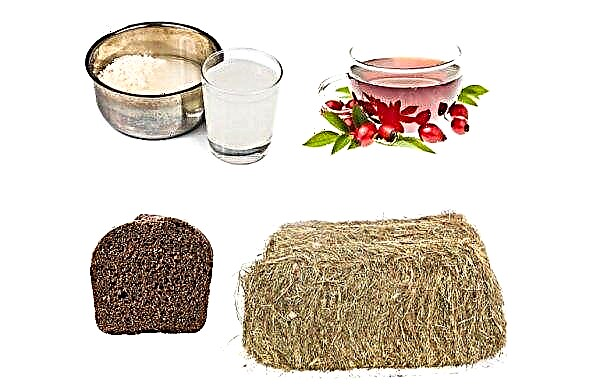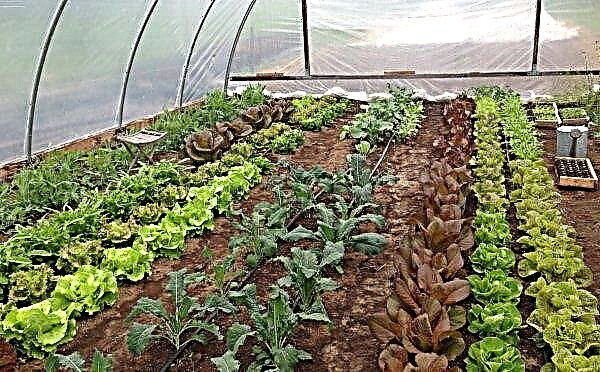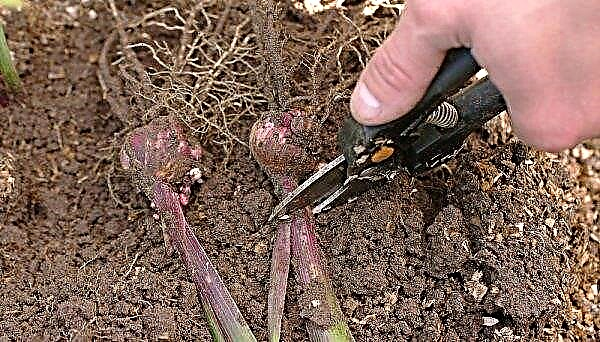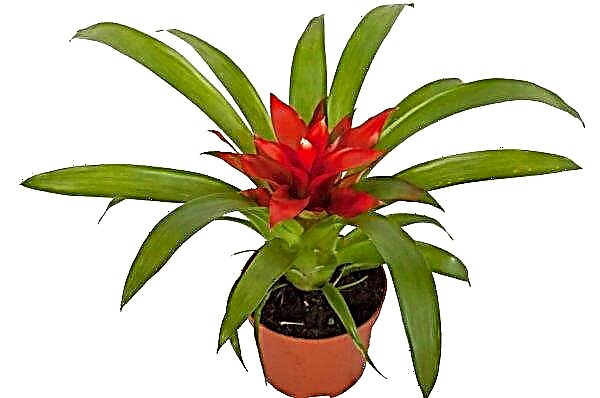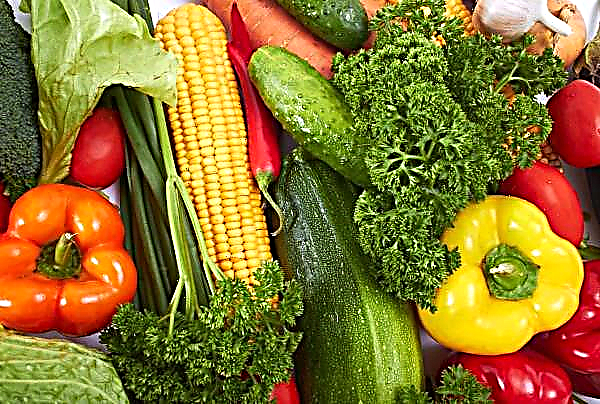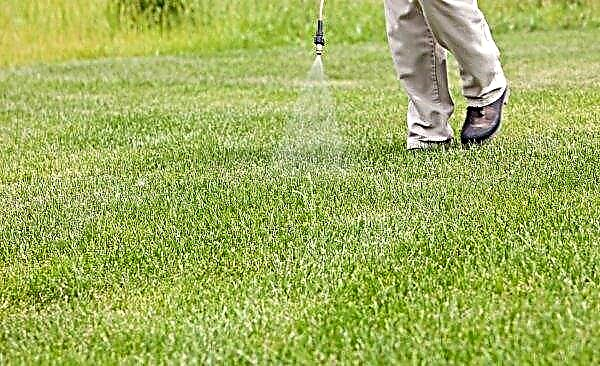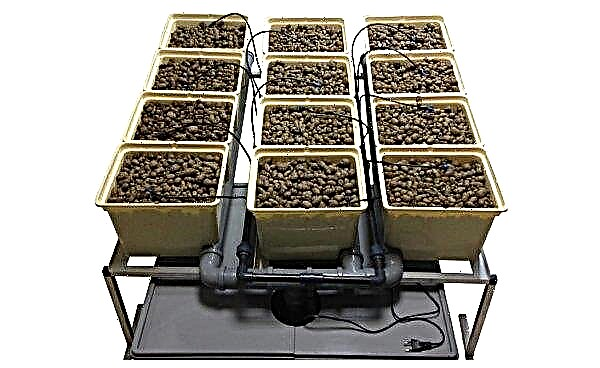Most breeds of chickens need free space and the possibility of walking in the fresh air to maintain health and active development, therefore, the content in the cells is not suitable for them. Broilers in this regard are an exception to the rule. Throughout their short lives, chickens must gain weight intensively, and the restriction of freedom of movement only contributes to this. Many subtleties for growing this bird will be highlighted in this article.
Design features
The fundamental difference between the cage for broilers is determined by the very concept of this variety of chickens and its purpose. Thus, unlike laying hens, which are also often kept in a cellular way, broiler chickens require much less free space, tolerate crowding more easily due to their natural phlegmatic nature, and therefore the size of the cells can be significantly smaller.
Important! It is customary to call a broiler a hybrid of a pet (not necessarily chicken or even not necessarily a bird), which grows very quickly and gains weight, is bred exclusively for meat and slaughtered at a young age. The etymology of the word is associated with the English "broil" - fried meat.
In addition, their life expectancy is very short - only two to three months, after which the chickens are sent to slaughter, so there will be no additional costs for arranging nests and egg traps.
Pros
- significant space savings. On the same space the cells can be arranged in tiers, which immediately increases the number of birds placed on the same territory several times;
- ease of maintenance and labor costs for the organization of the process. If you position the structure correctly and foresee all the necessary requirements in advance, the feed and water will be supplied to the cages automatically, and instead of cleaning the house, it will be enough just to periodically clean the pallets;
- reduced risk of developing infectious diseases. This is due to the lack of contact of the bird with its own droppings and the use of clean food. The feeder cages located on the outside do not allow the chicken to climb into the feed;
- the ability to contain birds of different species in one room, avoiding contact (unwanted mating, conflicts, etc.) between them;
- saving on feed (due to the limited possibility of scattering and pulling them over the entire area of the house). Some poultry farmers even allow themselves to collect grain mixtures or compound feeds that have spilled out of the feeders onto the floor and re-place them in the tray;
- tangible difference in energy consumption (the amount of light consumed, heat, air ventilation). One individual of all this requires much less due to the fact that in the same space contains more birds;
- faster weight gain by chickens, as they lead a sedentary lifestyle;
- ease of bird retrieval for slaughter. No need to chase chickens (in a limited space they are much more affordable).
Did you know? The fact that the broiler gained the necessary mass can be concluded without using weights. To do this, just grab the chicken in your hands and inflate the feathers on his chest. An indicator of the “readiness” of a bird for slaughter is fat that shines through the skin and has a yellowish tint.
Minuses
- increased risk of the spread of infectious diseases due to high crowding of birds. The lack of contact with the environment, other animals, including pests, makes the cell relatively safe. But this feature also has a flip side: if the causative agent of the disease nevertheless affected one individual, then with a high degree of probability the infection will soon spread to all inhabitants;
- increased risk of arthritis and other leg diseases in chickens forced to walk around the net;
- higher requirements for observing temperature conditions, lighting and humidity, especially in the absence of litter in the cells. In addition, in a large room, the bird has the opportunity to find a more comfortable place for itself (for example, where it is warmer, there is no draft). In a cell, an individual is much more dependent on given conditions;
- additional costs for the purchase of equipment or materials for its independent manufacture (in the latter case, difficulties with the construction of the structure and its installation);
- lower taste of meat.
 So the cellular content of chickens is suitable for large farms and not very profitable for small ones. In order for broiler productivity to be high, it is necessary to carefully prepare all the conditions in the room before launching the chickens into the cages.
So the cellular content of chickens is suitable for large farms and not very profitable for small ones. In order for broiler productivity to be high, it is necessary to carefully prepare all the conditions in the room before launching the chickens into the cages.Important! It has been observed that poultry kept on the outside have more tender meat than their relatives of the same breed, age and mass, which were reared in confined spaces.
Chicken coop requirements
When planning to breed broilers, it should be borne in mind that these chickens have very weak immunity compared to their other relatives.
Find out also

It is also important to carefully monitor the balanced diet of birds and their state of health, since a problem that is not noticed in time can lead to a significant reduction and even complete loss of the entire herd.
Dimensions
The optimal cage sizes for broilers are designed so that the design is as rigid as possible, but at the same time the chickens have the ability to at least some movement inside. The balance between the first and second requirements is shown in the table:
| Height (floor to ceiling): | 300 - 600 mm |
| Length | 500-1200 mm |
| Width | 200 mm |
| Pallet depth | 200 mm |
| Height from floor to first tier | 350 - 700 mm |
| The distance between the cells in the tier | 35 - 60 mm |
Important! The main parameter by which a cell is selected for a certain number of its cloisters is the length. All other indicators may remain unchanged. For example, for five goals and less, 500 mm is enough, for six to eight chickens - 700 mm, and for a dozen, no less than a meter is needed.
Lighting
As you know, lighting plays a very important role in the maintenance of chickens. But if for laying hens artificial extension of daylight is necessary to increase egg production, then broilers are much easier. In the dark, chickens do not eat, and for the fastest possible gain in live weight, they need to be fed as often as possible. For this reason, illumination in the room where the cells are installed should be carried out year-round, so that you can not do without additional equipment (large windows in the entire wall are not enough). To calculate the necessary lighting, one should proceed from the fact that for every four square meters of the room should be:
To calculate the necessary lighting, one should proceed from the fact that for every four square meters of the room should be:
- when using ordinary incandescent lamps - 100 watts;
- when using LED lamps - 12 watts.
Important! Fluorescent lamps can significantly save energy costs, but they are not suitable for lighting a room where broilers are kept. The flickering light from such devices irritates the psyche of chickens, which is why they gain weight much worse and can even become ill.
As for the lighting mode, there are no upper limits on this indicator: if it is possible to leave light in the house around the clock, this should be done. However, such wastefulness is affordable for not every owner, therefore, the following parameters are considered extremely permissible for the chickens to gain good weight:
| The age of the bird in days | The minimum number of "bright" hours during the day |
| 1—2 | 24 |
| 3—7 | 23 |
| 8 and older | 18 |
To properly configure the lighting mode, it is better to purchase a special timer. This automates the process and avoids errors due to the influence of the human factor. It is also important that the change in lighting (turning the light on and off) takes place gradually, since sudden flashes are an additional stress for the bird.
It is also important that the change in lighting (turning the light on and off) takes place gradually, since sudden flashes are an additional stress for the bird.
Temperature and humidity
If the chickens freeze, they will certainly fall ill and stop gaining weight.
Important! Below +20 ºС, the temperature in the room where the cages with broilers are installed should not fall, day or night. The maximum allowable threshold that birds can withstand is +32 ºС.
The favorable temperature regime for broilers also changes with the growth of chickens. Recommended indicators are as follows:
| The age of the bird in days | Room temperature |
| 1 | +32 ºС |
| 2 | +30 ºС |
| 3 | +28 ºС |
| 4 | +27 ºС |
| 5 | +26 ºС |
| 6—11 | +24 ºС |
| 12 and older | +22 ºС |
 High humidity is contraindicated for poultry, since in such conditions pathogenic fungi and many pathogenic bacteria begin to develop very quickly. During the first week of life of chickens, relative humidity in the house should be maintained at the level of 70-75% (then this indicator should be reduced to 50-65%).
High humidity is contraindicated for poultry, since in such conditions pathogenic fungi and many pathogenic bacteria begin to develop very quickly. During the first week of life of chickens, relative humidity in the house should be maintained at the level of 70-75% (then this indicator should be reduced to 50-65%).Did you know? When breeding early-growing chickens, businessmen often use “forbidden methods” in the form of antibiotics and growth hormones. There are many dubious tricks in the arsenal of dishonest sellers (pumping a carcass with water to increase weight, processing with chemicals to eliminate stale odor). In order not to become a victim of scammers, you should know that a quality chicken carcass should have a rounded breast, its meat is dry and pale pink, the bones do not bulge out, and the fat is always yellow (in no case gray).
Finally, another parameter that must be observed is ventilation. Broilers are very sensitive to drafts. But stagnation of air in the room, where there is a constant evaporation of the vapor of manure and urine, is an excellent environment for the propagation of dangerous microflora. Therefore, the air exchange should be approximately six cubic meters of fresh air per hour based on 1 kg of live weight of birds. Modern ventilation systems allow you to adjust this parameter very accurately. They are not cheap, but large farms cannot do without such costs.
How to make do-it-yourself broiler cages
Since the design of the cage for broiler chickens is quite simple, you can build it yourself if you wish. It will take very little time and effort to do this, especially if you prepare the drawing in advance and strictly follow it. Detailed instructions are outlined below.
Video: DIY broiler cages
Materials and tools for work
Before you begin, you need to prepare everything you need. From the materials you will need:
- wooden mounting rails — boards or beams (you can use the remnants of the building material available on the farm) with a section of 20 mm X 40 mm or 40 mm X 60 mm for the frame;
- metal corners for rigidity;
- metal mesh (chrome or galvanized) with a mesh size of about 2 cm (length and height) for lining;
- sheets of plywood, particleboard or OSB;
- tin sheets for the manufacture of pallets;
- electrodes or metal rods for the front wall;
- PVC sewer pipe or other plastic pipe for feeders and drinkers (for feeders - about 110-150 mm in cross section, thinner can be used for drinkers);
- nipples for drinking bowls;
- adapter and clamp for connecting the drinker to the hose;
- plugs of the appropriate size for the return end of the pipes;
- drop catchers
- mounts for installing feeders and drinking bowls;
- sealant (it is best to use food grade silicone);
- connecting parts: nails, screws, wood screws, furniture confirmations (for rigid fastening of the grid, screws must be with hats).
Did you know? Broiler meat is best suited for frying, baking and cooking minced meat (meatballs, meatballs, meatballs, souffle). But for the broth, good housewives recommend using a large adult bird.
The working tool kit includes:
- jigsaw or hacksaw for working with wooden and plywood parts;
- files with large teeth;
- metal scissors for cutting mesh;
- electric drill or screwdriver,
- drill;
- hammer;
- pliers or pliers;
- tape measure or other measuring tool;
- level;
- goniometer;
- felt-tip pen or soft pencil for marking.

Manufacturing steps
The following describes how to proceed with the manufacture of the structure:
- Before starting work, perform the drawing: outline the size of the cell based on the number of future "residents". The approximate height of the structure should be 120 cm, of which 70 cm will fall on the cage itself and 50 cm on the excrement pan.
- Guided by the plan, cut the required number of wooden battens of a given length under the frame.
- Assemble the frame using self-tapping screws or confirmates (when using nails, you must carefully ensure that their sharp ends do not stick out of the tree, since the bird can get hurt about them).
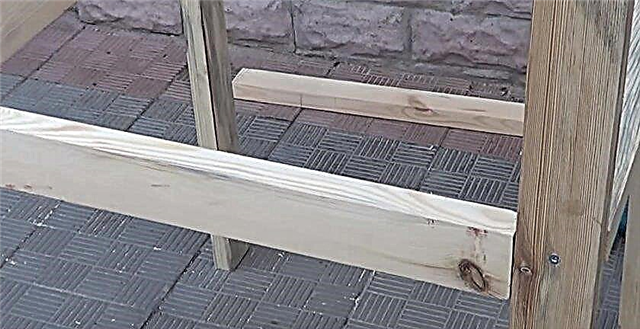
- Fix metal corners at the joints to increase the rigidity of the structure and protect it from distortions.
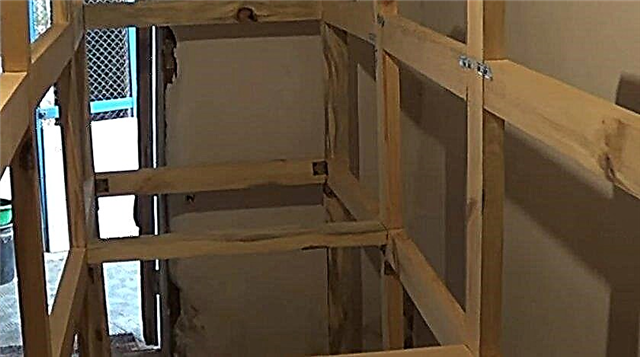
- When the frame is ready, you can start cutting the mesh. If the cutting is done correctly, and there is sufficient skill in such work, you can do this work at the preparatory stage. However, any mistake in the assembly of the frame will lead to the fact that the details of the mesh will be larger or smaller than the actual size of the wall. The mesh should be cut so that on each side on which it will be attached, it can be installed "overlap". This will provide a more stable design and prevent injury to a bird trying to stick its head or other part of the body into the gap formed between the net and the frame.
- Attach the mesh to the back of the cage with screws. It is important that it is well stretched and is not going to fold anywhere.

- Similarly set the grid to the bottom. At the junction with the base of the frame, cut corners along the width of the bar in the grid so that the bottom lies evenly.
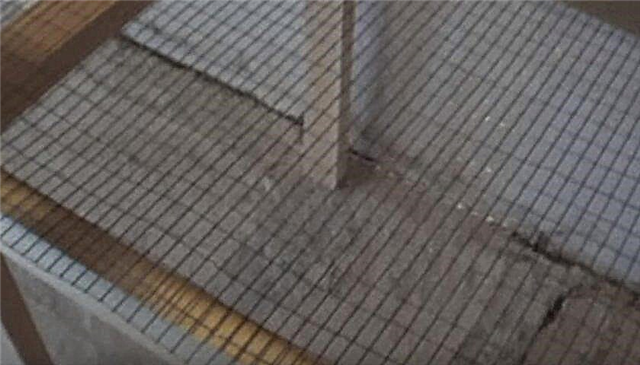
- Bend the ends of the grid rods sticking out on the sides with pliers.

- Cut a plastic pipe of the required size for the drinker (it should correspond to the length of the cage with a small gap for water supply).

- Mark with a felt-tip pen on the pipe the places under the nipples.
- Drill the necessary holes according to the marking and screw the nipples into them, after having pre-treated the thread with sealant.
- Using an adapter, a clamp and a fragment of a plastic pipe, connect the future drinker to a hose connected to the water supply, close the other end of the pipe with a plug.

- Install drip catchers.

- Lock the drinker inside the cage.

- Fasten the mesh to the side walls.
- As the front wall, use not rods, but metal rods. After drilling holes (through holes) in the upper and lower parts of the frame at a distance of about 3-4 cm from each other, insert a rod into each pair of holes (in the upper and lower).If you need to remove the chicken, it will be enough to pull out the required number of rods, so it is not necessary to make a special door in the cage.
- Cut the sewer pipe into two parts along the entire length to get a kind of gutter. This is almost a ready-made feeder.
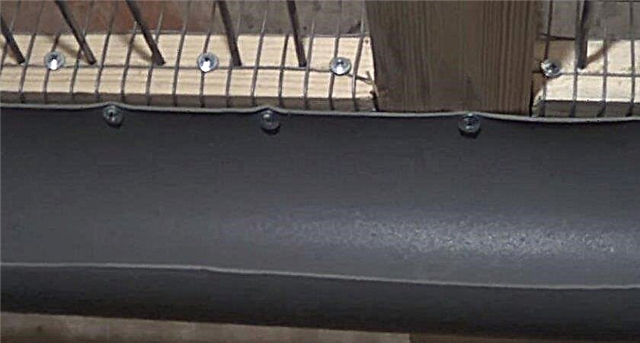
- Fix the half of the pipe along the front wall of the cage so that it is approximately at the level of the breast of the chickens. Install plugs on both sides to prevent food from spilling out.
- From tin or plywood, make a pallet and install it under the bottom.
- From above, it is enough to simply cover the cage with a sheet of plywood. It is undesirable to leave it open, as excessively active chickens can fly over the wall. The work is completed.
Did you know? The most high-calorie part of the chicken carcass is the wings, drumstick and thigh. Least calories in breast.
How to equip cells
The above diagram provides everything that is necessary for the maintenance of broilers. However, you can pay a little more attention to arranging the design.
Litter and protection against rodents
When keeping a large herd, the litter in the cells is usually not used. Instead of it (as described in the above example), the floor is made from a grate, and a mobile pallet is installed under it, into which the waste products of birds drain and pour. This system is quite hygienic, simple, economical and does not require additional efforts when cleaning the cage and changing the litter. On the other hand, the absence of insulation under the legs makes chickens more vulnerable to colds and other infectious diseases, as well as the development of arthritis. Therefore, if broilers are grown in limited quantities, it is still recommended to lay the litter on the bottom of the cage. Compliance with this condition is especially relevant in those farms where control over temperature, humidity and ventilation is not provided in an automated mode. Natural materials such as hay, straw, dry branches, peat or sawdust are usually used as litter. The main disadvantage of the litter is the need for its regular (at least every other day) replacement or adding of a new layer from five to ten centimeters thick over the contaminated one.
Therefore, if broilers are grown in limited quantities, it is still recommended to lay the litter on the bottom of the cage. Compliance with this condition is especially relevant in those farms where control over temperature, humidity and ventilation is not provided in an automated mode. Natural materials such as hay, straw, dry branches, peat or sawdust are usually used as litter. The main disadvantage of the litter is the need for its regular (at least every other day) replacement or adding of a new layer from five to ten centimeters thick over the contaminated one.
Important! Studies have shown that less moisture accumulates in sawdust and less pathogenic microorganisms are formed compared to straw. However, they should not be too small, otherwise they can get into the airways of chickens (which is very dangerous).
Otherwise, the risk of developing infectious diseases in the livestock becomes much higher than in the case of complete absence of litter. In addition, the ammonia vapors that accumulate in the room, which is released when the droppings evaporate, also adversely affect the health of young animals. To prevent chickens from being disturbed by rodents, the room in which the cell rows are installed must be well insulated. In any case, this measure is necessary, since a draft can cause even less harm to the bird’s health than a mouse accidentally climbed into the chicken coop. There are various electronic pest repellers. Theoretically, you can use the poison, spreading it away from the cells, but this option is still not safe. And finally, the most ancient way to ward off mice is a cat. It is not necessary to let the beast into the premises (this can be dangerous for the chickens themselves, because cats are excellent hunters, and they can use not only mice as game). It is enough for the rodent to smell the predator (you can comb out the pet and spread its hair in the corners of the room).
There are various electronic pest repellers. Theoretically, you can use the poison, spreading it away from the cells, but this option is still not safe. And finally, the most ancient way to ward off mice is a cat. It is not necessary to let the beast into the premises (this can be dangerous for the chickens themselves, because cats are excellent hunters, and they can use not only mice as game). It is enough for the rodent to smell the predator (you can comb out the pet and spread its hair in the corners of the room).
Did you know? The world record for the number of rodents caught belongs to a cat named Towser, who lived in Britain. On account of this hunter is nearly twenty-nine thousand mice.
A sufficiently high guarantee of protection against rodents is the high placement of cells. However, it is important that the stool tray is not in contact with the floor. Some owners recommend that the place under the cells be filled with broken glass so that the mouse or rat cannot even get closer to the structure, however, such drastic measures can cause injuries to people serving the cells, so it is hardly advisable to resort to such extremes.
Installation of feeders and drinking bowls
There are many feeders and drinking bowls, however, with respect to broilers contained in the cage, their choice is not so great. The best drinker option is a nipple system that prevents water splashing and wet litter. One example of such a home-made design is described in the instructions described above. As for the feeders, instead of the usual trays or gutters, experts recommend using bunker or automatic types, in which the grain mixture enters the feed platform as it is emptying. Since broilers need to be fed a lot and satisfyingly, such feeders contribute to the quickest weight gain by chickens. When installing feeders and drinking bowls, one should also take into account the minimum norms of free space, which should fall on each individual when approaching water or feed.
Since broilers need to be fed a lot and satisfyingly, such feeders contribute to the quickest weight gain by chickens. When installing feeders and drinking bowls, one should also take into account the minimum norms of free space, which should fall on each individual when approaching water or feed.
Important! A distinctive feature of broilers is a very poor, compared to other chickens, ability to navigate in space. Therefore, food and water in the cage should be in a conspicuous place that the bird will not need to look for.
One chicken should provide:
- from 60 to 100 mm at the feeder (depending on age);
- from 15 to 20 mm at the drinking bowl.
Useful Tips
Correctly organize the cultivation of broilers in a cellular way and avoid the most common mistakes will help the following tips:
- Feeding troughs and especially drinking bowls should not be placed directly on the floor of the cage, this will lead to a significant increase in feed costs and an increase in morbidity. It is best to place feeders on the outside wall so that chickens can eat by sticking their heads between the rods. It is very important to calculate the distance between the rods correctly, otherwise the chicken head may be stuck.
- After each change of livestock, the cage must not only be thoroughly cleaned, but also disinfected.
- The good quality of meat in broilers is determined not only by the correct content, but also by a balanced diet. Poultry cannot be fed uniformly, and the percentage of nutrients in the diet should be calculated very accurately. In confined spaces, this requirement is of particular importance, since the increased content of proteins and fats in the feed can lead to obesity in chickens, and this will adversely affect the consumer properties of meat.
- If, in addition to dry food, wet is present in the diet (cereals and mash), separate feeders should be provided for it, which must be removed and washed after each use.
- Water in drinking bowls should not be cold (its temperature is in the range from 22 to 25 ºС). Settled water is preferable to ordinary tap.
- When constructing a cage for the floor, it is better to provide a mesh with a smaller cell than for the walls (this will reduce the load on the legs of the chickens and reduce the likelihood of developing arthritis and dermatitis on the legs).

Drawings of cells for a different number of goals
Cell sizes depend on the number of individuals in the herd. For industrial purposes, products of three different sizes are produced: for ten, twenty and thirty individuals. If there are more birds, it is better to use the so-called battery method of keeping, which involves the installation of standard-sized cages in tiers or in rows of several pieces, since closing more than three dozen chickens in one room is uncomfortable and simply dangerous.
Important! When choosing a suitable size of construction, one should proceed from the standard sanitary norm for broiler keeping, according to which no more than ten chickens should be on one square meter.
In addition, the smaller the length of the “room”, the easier it is to ensure its rigidity (while a too long structure is much less stable and durable). The same applies to the bottom: as broiler chickens grow, they quickly gain weight, as a result of which the too large net under them starts to sag.
Based on this, a cage for 10 goals can be made according to the following drawing: But 60 pieces of chickens are easily placed in six separate sections, set, for example, in three tiers (two rows in each, as shown in the drawing):
But 60 pieces of chickens are easily placed in six separate sections, set, for example, in three tiers (two rows in each, as shown in the drawing): Many similar constructions can be invented, based on the given dimensions of the house and the planned scale of production of carcasses. Thus, it is clear that the maintenance of broilers in the cells is not so difficult.
Many similar constructions can be invented, based on the given dimensions of the house and the planned scale of production of carcasses. Thus, it is clear that the maintenance of broilers in the cells is not so difficult.
If at the preparatory stage to organize the process in compliance with all sanitary and technical requirements, further care of the livestock will not cause much trouble. On the other hand, ignoring at least one condition can lead to the death of the herd, therefore, for a small number of birds the corral type of rearing is more optimal.











